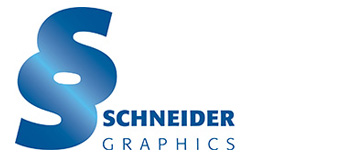 If your marketing materials are going out on the town, might as well dress them up with a coating…
If your marketing materials are going out on the town, might as well dress them up with a coating…
Why are coatings used on printing?
Print coatings are used on printed products primarily for protection or to achieve certain visual effects. Coatings can provide protection from moisture, scuffing, scratching and finger prints. They can also be applied to one or both sides of a printed piece to create a glossy or dull finish or can be applied selectively to highlight a certain visual element.
Types of print coatings
· Aqueous Coating
Aqueous coating is a clear, fast-drying water-based coating that is used to protect printed pieces. It provides a high-gloss, satin or dull surface that deters dirt and fingerprints. Aqueous coating improves the durability of postcards and other mailed pieces as they go through the mail, and protects business cards as they are carried in peoples’ wallets. It also looks beautiful on brochures, catalogs and presentation folders. Aqueous coatings provide more substantial scuff-resistance than varnishes. Aqueous is typically applied to the entire printed piece, usually by the last unit on a printing press. Due to its water base, aqueous coating is more environmentally friendly than varnish or UV coatings.
· Varnish
Varnish is basically clear ink and can be gloss, satin or dull. A flood varnish covers the entire printed page for protection or sheen. A spot varnish allows you to highlight specific areas of a printed piece and adds shine and depth to specific elements on the page such as a logo or image. Varnishes are also applied on-press, but they are heavier-bodied and can be applied (like inks) to only certain areas (spot varnish). A plate must be created to apply a spot varnish, so artwork is necessary.
· UV Coating
UV coatings are cured by exposure to ultraviolet light to quickly dry and harden the coating. UV coatings provide the highest gloss versus other coatings but may crack when scored or folded due to the thickness and hardness of the coating. Some find it too shiny for some uses. UV coatings can be applied as a flood (covering the entire printed sheet) or as a spot coating and can be applied on or off press. UV compatible inks must be used on sheets that will be UV coated. UV coated sheets cannot be foil stamped and embossing should be done after the coating.
· Soft Touch Coating
This coating creates a velvety texture. The paper becomes “soft” to the touch and increases the tactile appeal. It creates a softer look and feel on printed materials than either aqueous or UV coating, while creating a barrier which is fingerprint resistant. It dries fast, is non-yellowing, and is eco-friendly. Luxurious and sophisticated are words often used to describe the effect Soft Touch® coating produces.
When should a print coating be used?
In most instances a coating will help protect and enhance your final printed product. They are a must for any piece being mailed, or recommended for any product printed on coated paper that will get handled, such as business cards, brochures, bookmarks, rack cards, catalogs or presentation folders. Your printer can help you decide what type of coating is right for your project.
When should a print coating not be used?
There are certain times when you do want your paper to go naked. It may be difficult to write on coated paper, especially if it has a glossy coating. If you are ordering greeting or note cards and intend to write inscriptions on the inside make sure to specify no coating on the inside of the card. The same goes for the address side of postcards or other mailing panels unless your printer or mailing house assures you they can print addresses on coated paper. If in doubt ask for some samples and run them through your printer or try writing on them.
Schneider Graphics offers a variety of coatings. Call us if you’d like to learn more or would like us to send you some samples.

